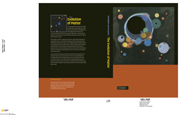Book contents
- Frontmatter
- Contents
- Introduction
- Part I The elements
- Part II Early solar system: nebula formation, evolution and lifetime
- Part III Accretion of the Earth
- Part IV Global evolution of the Earth
- 22 First look at the Earth
- 23 The plate-tectonic concept: some phenomenology
- 24 Ocean-ridge and island magmatism
- 25 Subduction and island-arc magmatism
- 26 Composition of the continental crust: magmatic, metamorphic and sedimentary processes
- 27 Isotopic records of the evolution of Earth's accessible reservoirs
- 28 Geochemical Earth model
- References
- Glossary
- Abbreviations
- Meteorites, rocks and minerals
- Index
27 - Isotopic records of the evolution of Earth's accessible reservoirs
Published online by Cambridge University Press: 04 September 2009
- Frontmatter
- Contents
- Introduction
- Part I The elements
- Part II Early solar system: nebula formation, evolution and lifetime
- Part III Accretion of the Earth
- Part IV Global evolution of the Earth
- 22 First look at the Earth
- 23 The plate-tectonic concept: some phenomenology
- 24 Ocean-ridge and island magmatism
- 25 Subduction and island-arc magmatism
- 26 Composition of the continental crust: magmatic, metamorphic and sedimentary processes
- 27 Isotopic records of the evolution of Earth's accessible reservoirs
- 28 Geochemical Earth model
- References
- Glossary
- Abbreviations
- Meteorites, rocks and minerals
- Index
Summary
Introduction
In this chapter we discuss the present-day isotopic characteristics of the principal terrestrial reservoirs and the evolutionary trends that could have led to their diversity, starting from a common chondrite-type origin. Ultimately, these data allow the modelling of Earth's evolution. The main reservoirs considered in this book are the core (COR, Chapter 18), the core–mantle transition zone (D′′ or DDP, Chapter 19), the depleted MORB-source mantle (DMM), the continental crust (CCR) and the atmo-hydrosphere (AHS). Of these the latter three can be considered to be the Earth's accessible reservoirs (EARs), as they can be directly or indirectly sampled, and these are the main reservoirs discussed below. The two silicate reservoirs, DMM and CCR, constitute the major part of the bulk silicate Earth (BSE). This is generally considered to have chondrite-like relative abundances of the refractory lithophile elements, and hence the name CHUR (chondritic uniform reservoir) is also used.
The complexity of the terrestrial transport processes discussed in Chapters 24–26 in many cases prevents the reconstruction of remote source domains using the chemical compositions of the sedimentary or magmatic rocks that resulted. However, isotope ratios preserve a unique record of the chemical composition and evolution of the sources, and reading this record is the major aim of isotope geochemistry and geochronology. These are multifarious branches of Earth sciences, and in this chapter we mainly (but not exclusively) concentrate on how radiogenic isotope systematics shed light on both the composition and evolution of major terrestrial reservoirs.
- Type
- Chapter
- Information
- The Evolution of MatterFrom the Big Bang to the Present Day, pp. 382 - 426Publisher: Cambridge University PressPrint publication year: 2008



